Spectrum Summary: The Narasimha Rao Years (1991–1996) | History for UPSC CSE PDF Download
Economic Reforms under P.V. Narasimha Rao
- Appointment of Manmohan Singh: P.V. Narasimha Rao appointed Manmohan Singh as the Finance Minister, who played a crucial role in implementing economic reforms.
- Challenges Faced: The Indian economy was grappling with severe issues like a tough balance of payments situation and high inflation rates.
- Balanced Approach: Rao aimed for a balanced approach to economic reforms, seeking strong economic growth while minimizing public hardship.
- New Economic Policy of 1991: Introduced to address fiscal and balance of payments problems, this policy aimed to stabilize the economy through liberalization , privatization , and globalization .
- Fiscal Measures: Key measures included devaluing the rupee to boost exports and reducing the fiscal deficit.
- Tax Reforms: Manmohan Singh gradually lowered import duties, income tax, and corporate tax.
- Trade and Industrial Policy Reforms: The government focused on removing restrictive trade and industrial policies, eliminating quotas on imports, especially for machinery and equipment, and rationalizing the tariff structure by reducing custom duties.
- Industrial Policy of 1991: This policy significantly reduced the list of industries requiring licensing, promoting ease of doing business.
- MRTP Act Amendments: Amendments to the Monopolies and Restrictive Trade Practices Act (MRTP) removed growth restrictions and allowed mergers of large business houses.
- Public Sector Reforms: The role of the public sector was diminished, granting it more autonomy, and encouraging private investment in infrastructure.
- Foreign Investment: Restrictions on foreign ownership were relaxed, leading to an increase in foreign investment.
- Service Sector Liberalization: Sectors like insurance, banking, telecom, and air travel were liberalized to allow private sector participation.
- Regulatory Changes: Regulatory changes included abolishing the Controller of Capital Issues and introducing the SEBI Act of 1992 to better regulate market intermediaries.
- Launch of National Stock Exchange: The National Stock Exchange was launched as a computer-based trading system, enhancing market efficiency.
- Bureaucratic Controls: Despite reforms, bureaucratic controls persisted, causing delays in starting businesses compared to other countries.
- Labor Laws: Labor laws remained unchanged, making it difficult for failing enterprises to exit the market.
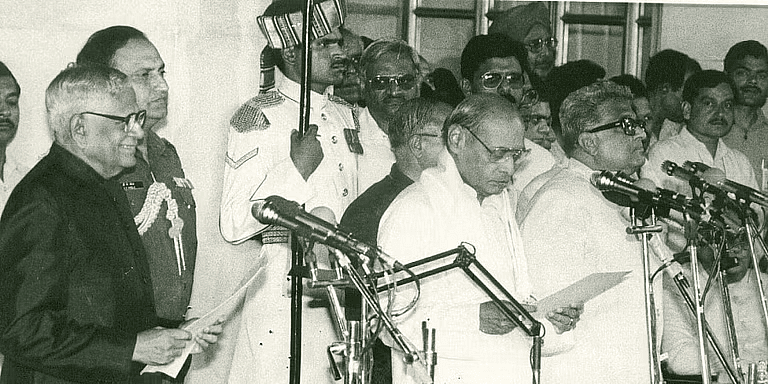
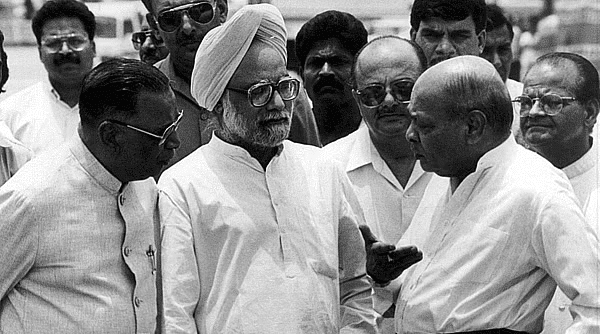
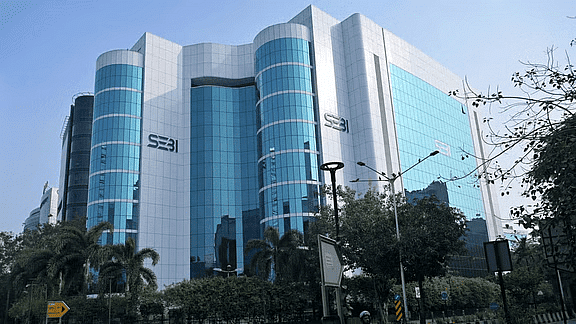
Panchayati Raj and Nagarpalika Acts
- Initiation by Rajiv Gandhi: Rajiv Gandhi started the push for recognising Panchayati Raj and municipal governance in the Constitution.
- Narasimha Rao's Prime Ministership: Under Narasimha Rao, the constitutional status for both Panchayati Raj and municipal governance was established.
- 73rd Constitutional Amendment: This amendment put into action a Directive Principle of State Policy, giving constitutional recognition to local village governments through the Panchayati Raj system.
- Provisions for Local Village Government: The 73rd Amendment featured various provisions aimed at empowering and structuring local village administrations.
- 74th Constitutional Amendment: This amendment required states to implement municipalities according to the framework set out in the Constitution.
- Constitutional Obligation for States: The 74th Amendment created a constitutional requirement for states to comply with the municipal system as detailed in the Constitution.
- Reservations for SC/ST and Women: There are provisions for reservations for Scheduled Castes (SC), Scheduled Tribes (ST), and women in both Panchayats and municipal bodies to promote inclusive representation.
Handling Security Issues and Space Tech
Punjab Situation Control
- Under Narasimha Rao's leadership, the security challenges in Punjab were successfully managed.
- State elections were held, which helped stabilise the area.
Militancy Subsided
- After the 2002 elections, the level of militancy in Punjab greatly reduced.
Terrorist and Disruptive Activities (Prevention) Act
We will now shift our focus to security concerns in Punjab following the discussion on local governance.
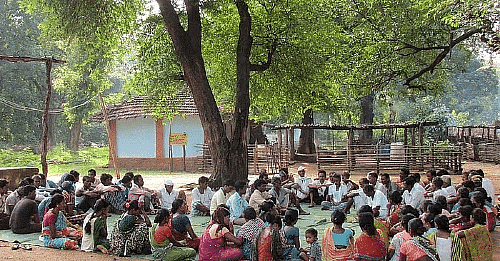
Terrorist and Disruptive Activities (Prevention) Act
- The government enacted the Terrorist and Disruptive Activities (Prevention) Act to address security challenges, particularly concerning infiltrators from Pakistan .
Defence Sector Modernization
- Military spending was increased to enhance the country's defence capabilities during Rao's tenure.
Induction of Prithvi-1 Missile
- The Prithvi-1 missile was successfully integrated into the army, demonstrating advancements in indigenous missile technology.
Advancement of Nuclear Program
- Narasimha Rao was instrumental in advancing India's nuclear program , contributing to the enhancement of the country's nuclear capabilities.
Space Technology Progress
- Under Rao's administration, there were significant advancements in space technology , including successful tests of the Augmented Satellite Launch Vehicle and the Polar Satellite Launch Vehicle , showcasing India's growing expertise in space exploration and satellite launch.
Foreign Policy
Post-Soviet Era Adaptation
- Following the dissolution of the Soviet Union in 1991, India adapted its foreign policy in response to the changing global dynamics and the end of Cold War bloc politics.
Improved Relations with the US
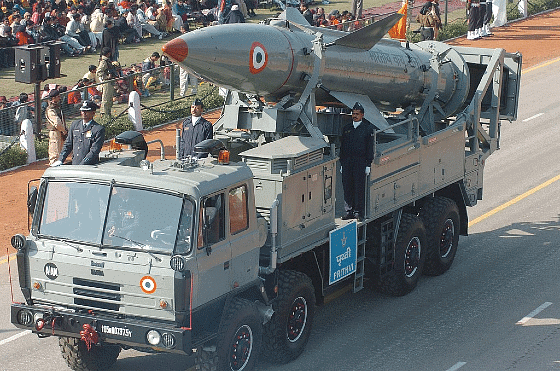
India's Foreign Relations
During this time, India's relationship with the United States improved significantly.
Diversification of International Relations
- India built strong relationships with Western countries , Japan , Israel , Brazil , and South Africa .
- The country's foreign policy became closely linked to economic factors.
Look East Policy
- Narasimha Rao introduced the Look East Policy to strengthen India's ties with the Association of Southeast Asian Nations ( ASEAN ).
- The policy aimed to enhance political , economic , and cultural relations with countries in Southeast Asia and the Pacific.
- Subsequent governments continued and expanded the Look East policy .

Negative Aspects of Narasimha Rao's Tenure
Babri Masjid Demolition
Background on the Ram Janmabhoomi-Babri Masjid Dispute
- In the late 1980s, the Bharatiya Janata Party (BJP) capitalised on the Ram Janmabhoomi issue, claiming it as the birthplace of Lord Ram, to gain political leverage.
- The Vishwa Hindu Parishad (VHP) , associated with the BJP, organised protests advocating for a temple at the Babri Masjid site in Ayodhya.
VHP's Plan and Gathering of Kar Sevaks
- The VHP declared its intention to commence temple construction on December 6, 1992 .
- Thousands of volunteers, known as kar sevaks , flocked to Ayodhya.
- Initially, the plan was to conduct prayers near the mosque, but some groups of kar sevaks disregarded instructions and approached the mosque.
Uncontrolled Situation and Demolition
- Despite appeals from the Rashtriya Swayamsevak Sangh (RSS) and the police for restraint, the situation escalated uncontrollably.
- Kar sevaks, equipped with tools, scaled the mosque walls and began the attack.
- Prominent BJP leaders, including L.K. Advani , were present, and efforts to retract the kar sevaks reportedly failed.
BJP's Response and Aftermath
- The BJP distanced itself from the vandalism, portraying the incident as a tragic intensification of religious discord.
- While some BJP leaders faced arrest, it is crucial to understand that the ensuing riots were a broader reaction to the Babri Masjid demolition, not solely triggered by these arrests.
- Communal riots erupted in Uttar Pradesh and various other regions, resulting in significant casualties.
- The Shiv Sena , especially in Bombay, exacerbated the violence.
Bomb Blasts in Bombay (1993)
Following the Babri Masjid demolition, a series of bomb blasts rocked Bombay in 1993, resulting in extensive destruction and loss of life.
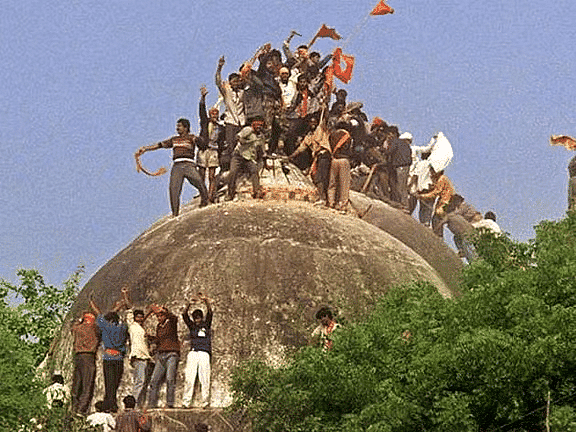
Retaliatory Bomb Blasts in Bombay
- In 1993, retaliatory bomb blasts rocked Bombay, reportedly orchestrated by mafia leaders based in Dubai.
- These blasts were perceived as a response to the attacks on Muslims that occurred during the demolition of the Babri Masjid.
Role of Kalyan Singh and Centre's Inaction
- Kalyan Singh, the Chief Minister of Uttar Pradesh at the time, faced significant criticism for his failure to prevent the destruction of the Babri Masjid.
- The central government's inaction was also called into question, with suggestions that it did not want to appear anti-Hindu .
- President's rule in Uttar Pradesh was imposed only after the demolition had taken place, further highlighting the delayed response.
International Image and Social Impact
- The demolition of the Babri Masjid had a detrimental impact on India's international image .
- While fears of widespread lawlessness and a drift towards dictatorship did not materialize, the event left a lasting mark on Indian society.
- It sowed seeds of suspicion and animosity between the Hindu and Muslim communities, straining inter-religious relations.
Liberhan Commission
- The Liberhan Commission was established just ten days after the Babri Masjid demolition to probe the circumstances and events surrounding the incident.
- Justice Liberhan submitted his report in June 2009, implicating prominent BJP figures such as L.K. Advani, Murli Manohar Joshi, Atal Bihari Vajpayee, and Kalyan Singh.
- The report pointed fingers at the BJP-led government in Uttar Pradesh, under Kalyan Singh, for its significant role in the events leading to the demolition.
Report Findings and Criticisms
- The Liberhan Commission's findings held 68 individuals accountable for the events surrounding the Babri Masjid demolition.
- While BJP leaders faced heavy criticism, the central government and Prime Minister P.V. Narasimha Rao were not subjected to severe censure.
- The report acknowledged Rao's argument that it was not legally feasible to impose president's rule in Uttar Pradesh before the demolition occurred, reflecting a degree of understanding towards his position.

Corruption Scandals and No-Confidence Motion (July 1993)
- The Narasimha Rao government, which was a minority government , faced a no-confidence motion in July 1993 due to its insufficient support.
Vote Manipulation Allegations
- The opposition brought forth a no-confidence motion against the government.
- Allegations arose that members of the Jharkhand Mukti Morcha (JMM) and Janata Dal (Ajit Singh group) voted against the motion.
- It was claimed that Narasimha Rao bribed JMM members through a representative, helping the government win the vote.
- This alleged bribery was pivotal in enabling the government to complete its full five-year term.
Post-1996 Investigations and Convictions
- Investigations into the bribery case began after Rao left office in 1996.
- A special court convicted Rao and his colleague, Buta Singh .
- However, the conviction was overturned upon appeal to a higher court.
- Doubts were raised about the credibility of Mahato, who claimed to have accepted the bribe.
- In 2002, both Rao and Buta Singh were cleared of bribery charges .
Involvement in Other Scandals
- Rao was implicated in the Harshad Mehta stock market scam , as well as the hawala and Lakhubhai cheating cases .
- However, he was eventually cleared of charges in all these cases.

Kashmir Militancy and Islamic Fundamentalism in Kashmir
- In the 1980s and 1990s, there was an increase in militancy and Islamic fundamentalism in Kashmir, with active support from Pakistan.
- Religious sentiments were heightened, connecting the aspiration for Kashmir's freedom from India with Islamic beliefs.
Lashkar-e-Taiba and Kashmir's Status
- Groups like Lashkar-e-Taiba aimed to undermine others such as the Jammu Kashmir Liberation Front (JKLF), which sought independence instead of joining Pakistan.
- Hafiz Saeed, the leader of Lashkar-e-Taiba and mastermind behind the 26/11 attacks, had conflicts with the JKLF and wanted revenge against India.
- The JKLF wanted Kashmir to be independent but faced opposition from groups that supported joining Pakistan.
- Some factions were angry with India for its involvement in the formation of Bangladesh.
Fundamentalist Measures and Lifestyle Changes
- Islamic fundamentalism caused changes in daily life in Kashmir, imposing rules such as:
- Banning cinema
- Forbidding smoking
- Prohibiting drinking alcohol
- Women were forced to wear the burqa as part of the fundamentalist agenda.
Plight of Kashmiri Pandits
- Kashmiri Pandits, a Hindu minority in the region, suffered greatly from militant actions.
- Many were forced to leave their homes and became refugees due to the worsening security situation and threats to their lives.
General Elections of 1996
Themes and Divisions in 1996 General Elections
- The general elections of April-May 1996 had three main themes:
- Ayodhya
- Economy
- Corruption
- Political divisions were based on religious and caste lines.
- Some factions within the Congress party blamed then-Prime Minister Narasimha Rao for mishandling various issues.
Lack of Majority and BJP's Performance
- No single party achieved a majority in the elections.
- The Bharatiya Janata Party (BJP) emerged as the leading party, securing 161 seats.
- Its allies, including the Samata Party, Shiv Sena, and Haryana Vikas Party, collectively won 26 seats.
- This brought the total for the BJP and its allies to 187 seats.
Atal Bihari Vajpayee in 1996
- Atal Bihari Vajpayee played a significant role during this election period.
Kashmiri Pandits
Kashmiri Pandits , a minority Hindu group in Kashmir, faced severe hardships due to militant activities. Many were compelled to abandon their homes and flee the region, becoming refugees as the security situation deteriorated and threats to their safety increased. During this tumultuous period, Bitta Karate , a Kashmiri separatist militant, emerged as a significant figure.
1996 General Elections
- The general elections of April-May 1996 were dominated by three key issues: Ayodhya , the economy , and corruption .
- The political landscape was divided along religious and caste lines .
- Within the Congress party, there were factions that criticized then-Prime Minister Narasimha Rao for mishandling various situations.
- No single party achieved a majority on its own in the elections.
- The Bharatiya Janata Party (BJP) emerged as the leading party, winning 161 seats .
- The BJP's allies, including the Samata Party , Shiv Sena , and Haryana Vikas Party , added 26 seats to their total.
- In total, the BJP and its allies held a combined strength of 187 seats .
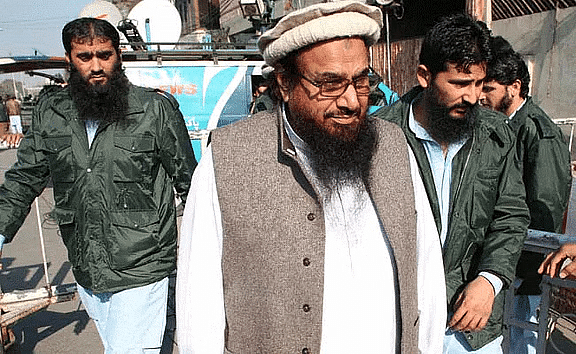
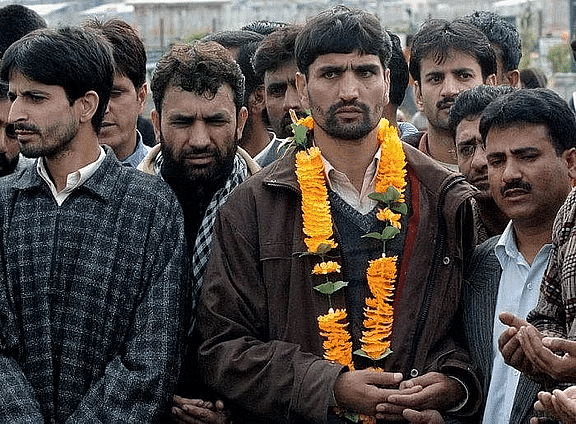
Themes and Divisions in the 1996 General Elections
BJP's Lead and Lack of Majority
- In the 1996 general elections, no single party was able to secure a majority on its own.
- The Bharatiya Janata Party (BJP) emerged as the leading party with 161 seats .
- When the BJP joined forces with its allies, including the Samata Party , Shiv Sena , and Haryana Vikas Party , their total seat count increased to 187 .
Position of Congress and National Front
- The Congress party secured the second position in terms of seats in the 1996 elections.
- The National Front , which comprised parties like the Janata Dal , Telugu Desam , and the Left Front , finished third in the overall seat count.
Regional Parties' Independence
- Many strong regional and state parties chose not to align with any of the three main contenders for power in the 1996 elections.
- The political landscape was marked by a variety of regional parties, each with its own independent stance and views.
Resignation of Narasimha Rao
- Following the general elections and the Congress party's significant loss, Prime Minister Narasimha Rao resigned from his position.
- He later stepped down as the party chief, marking a significant change in leadership within the party after the election results.

Emergence of the Dalit Voice
Unification of Dalits and Rise of Dalit Leadership
The term "Dalits" has become more prevalent than official terms like "Scheduled Caste" or "Harijan." Dalits started to come together in their pursuit of representation through their own political party. Historically, the Congress party garnered Dalit support, and after Dr. B.R. Ambedkar's demise, Dalits turned to Jagjivan Ram as their leader.
Challenges to Congress Dominance
The Congress party, which traditionally received support from Dalits, faced challenges from other parties advocating for Dalit interests. Notable among these were:
- The Bitta Karate , a militant group from Kashmiri separatists.
- The more aggressive Dalit Panthers , which also contested the Congress's representation of Dalits.
Kanshi Ram's Mobilization Efforts
In the 1970s, Kanshi Ram left his government job and began organising Dalit government employees through the All India Backward and Minority Communities Employees Federation (BAMCEF) . This group gained a significant following and laid the groundwork for Kanshi Ram's future political initiatives.
Formation of the Bahujan Samaj Party (BSP)
In the 1980s, inspired by the success of BAMCEF, Kanshi Ram founded the Bahujan Samaj Party (BSP) . The term "Bahujan" was chosen to reflect the party's aim of representing not only Dalits but also other backward castes, Muslims, and various marginalised communities over time.
BSP's Political Narrative and Electoral Impact
The BSP conveyed a message that resonated with Dalits, emphasising that the Congress had historically relied on Dalit votes. In contrast, the BSP championed social justice and substantial change. While the BSP did not have a significant impact in the 1984 elections, it made considerable strides in the Uttar Pradesh state elections in 1993, winning over 60 seats and becoming a key player alongside the Samajwadi Party and the BJP .
Leadership Transition to Mayawati
Mayawati, a close follower of Kanshi Ram, assumed leadership of the BSP. She played a crucial role in forming alliances with other caste groups and political parties, which contributed to the BSP’s expanding influence.
Historic Achievements of Mayawati
Mayawati made history by winning a Lok Sabha seat in 1989 and becoming the first Dalit woman to serve as the Chief Minister of Uttar Pradesh in June 1995. She returned to this position in 2007 and held office until 2012, solidifying her significance in Dalit politics and the political landscape of Uttar Pradesh.
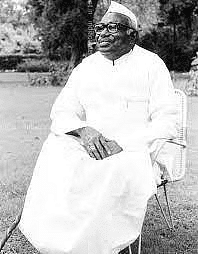
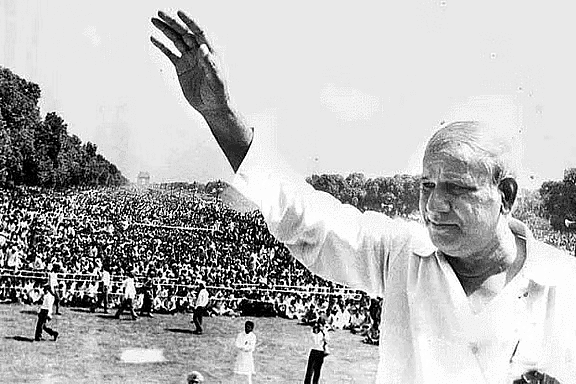
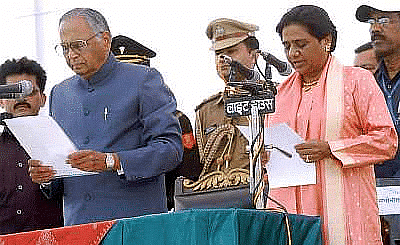
|
216 videos|855 docs|219 tests
|
FAQs on Spectrum Summary: The Narasimha Rao Years (1991–1996) - History for UPSC CSE
| 1. What were the key economic reforms implemented during the Narasimha Rao years? |  |
| 2. How did the Panchayati Raj and Nagarpalika Acts contribute to governance during the Narasimha Rao years? |  |
| 3. What were the major security issues handled during the Narasimha Rao years? |  |
| 4. How did the Narasimha Rao government shape India's foreign policy? |  |
| 5. What were the major corruption scandals that occurred during the Narasimha Rao years? |  |
















